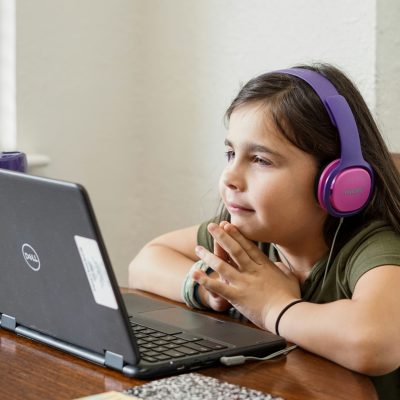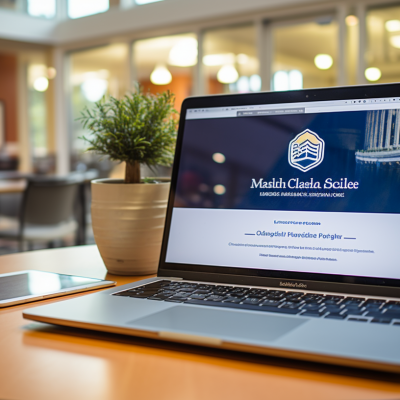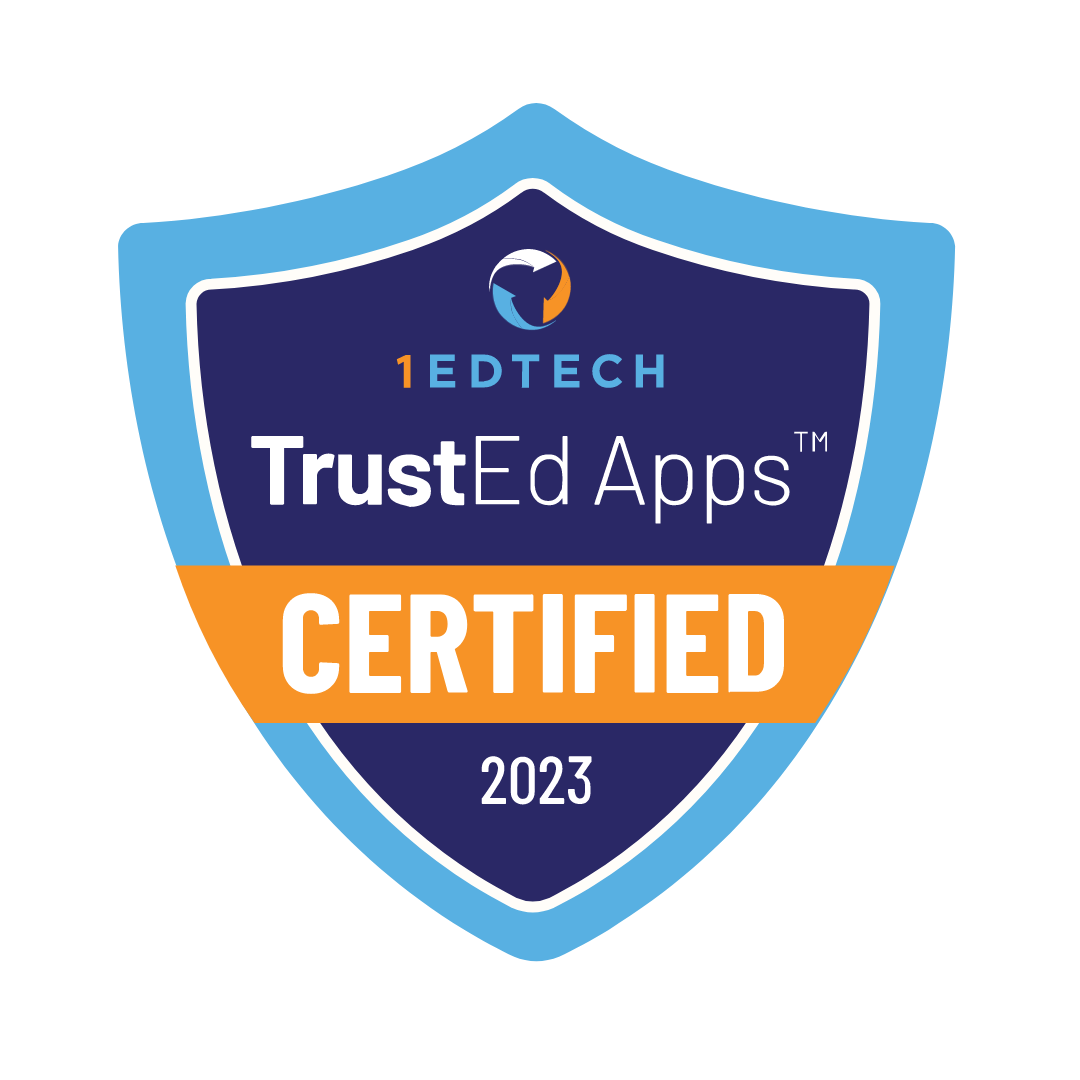Virtual elementary schools are new age temples of knowledge, where traditional concrete and brick are replaced by bytes and bandwidth. Online platforms tailor education to the unique needs of each student. They offer personalized learning beyond the four walls of traditional classrooms. Very importantly and conveniently, these educational institutions can offer flexible schedules. It in turn improves work-life balance. It also fosters self-discipline from a very young age. So what exactly is a virtual elementary school? Let’s dive into this topic.
Contenu
What is Virtual Elementary School?

Virtual Primary School is an online educational institution specifically designed to meet the needs of elementary school students. It offers a range of classes and programs. These can be accessed remotely using virtual platforms and digital tools. It’s like bringing a traditional classroom into your home with the help of the internet.
Virtual elementary schools utilize a variety of digital resources. These include: live online classes. They also have interactive learning materials and educational software. These tools deliver curriculum content and instruction. This allows students to complete learning assignments from anywhere there is an Internet connection. In a virtual class, students can access lessons from their homes or any other comfy place.
One important aspect of virtual elementary schools is flexibility. It is offered in terms of scheduling and personalized learning. In a virtual environment, students have more options. This allows them to take control of their schedules and study at a time that best suits their level of concentration and personal preferences. This flexibility will be helpful for students who have difficulty in a traditional classroom due to ADHD or social anxiety. It helps them tailor their learning experience to their unique strengths and needs.
For example, if a 6th grade student has ADHD, they struggle to concentrate in a regular classroom. A virtual elementary school lets them split learning into shorter, easier parts. This personalized approach can significantly increase student engagement and achievement.
In addition, virtual elementary schools often use adaptive learning technologies. These features enable personalization of the pace and content of learning according to the individual progress and understanding of each student. This personalized approach ensures that students receive individualized support and guidance. It can lead to better grades. And, to a better learning experience.
Let’s take a look at some of the key factors that make these online learning environments unique from traditional brick-and-mortar and conventional schools.
Comparing Traditional and Virtual Elementary Education

When it comes to choosing the best educational path for your child, the comparison between traditional and virtual elementary education is crucial. Here, we’ll explore the features that distinguish these two methods of learning.
Let’s start with flexibility. Virtual elementary schools offer schedules. The schedules can adapt to a student’s pace of learning. This means lessons can be done at times that work best for the student and their family. But, traditional schools follow a set schedule. This schedule may not fit every student’s needs or family’s lifestyle.
In terms of personalized learning, virtual schools have the ability to tailor learning paths according to an individual student’s strengths, weaknesses, and interests. This approach is personalized. It lets students learn at their own pace and in a way that suits their needs. Traditional schools often have larger classes and a set curriculum. This makes it hard for educators to cater to each student’s learning style.
Additionally, student-teacher interaction differs greatly between traditional and virtual elementary education. In virtual schools, most interaction with teachers and peers occurs online, using digital platforms for communication and collaboration. This can be convenient and helpful for students. They thrive in tech-savvy environments or may struggle with face-to-face interactions. In contrast, traditional schools emphasize in-person interaction. They allow students to engage with teachers and peers in person daily.
We continue to compare traditional and virtual elementary education. Each has clear benefits. These benefits cater to different learning styles and preferences.
Let’s move forward. We’ll delve into the specific advantages that virtual elementary schools offer over traditional ones.
Advantages of Virtual Elementary School

One of the significant advantages of virtual elementary schools is the individualized approach to learning. In a traditional classroom, the teacher is forced to teach at a pace that suits most students. This causes some of them to either fall behind or feel like they are failing. In a virtual class, lessons can be tailored for different learning styles and each student’s pace. This approach allows students to fully grasp concepts at their own pace. This ultimately increases their performance and understanding.
Imagine a student who is struggling with math. He may feel overwhelmed during traditional lessons. Especially when the teacher moves on to new lessons and the student is still struggling to understand the previous ones. In a virtual class, such a student can spend extra time on hard concepts. They can do this without worrying about falling behind. On the other hand, a student who excels in language arts can move forward without feeling behind. This is what makes learning more fun and effective for everyone involved. Those who are advanced and need constant intellectual stimulation benefit from individualized instruction, which enhances the educational process.
Virtual elementary schools have another advantage. They provide a safe and secure learning environment.
For some students, attending traditional brick-and-mortar schools may not always be a viable option due to health concerns or past experiences with bullying. Virtual schooling offers these students a safe and cozy space. They can learn without fear of health risks or bullying. This safe haven fosters an atmosphere. Here, students can focus on their studies without the distractions from negative experiences in traditional schools.
Consider a student with severe allergies or asthma. Going to a physical school could be very risky. This is due to the chance of exposure to allergens or contagious illnesses. By participating in a virtual school, this student can comfortably engage in their studies from home, eliminating exposure risk while still receiving a quality education.
Similarly, bullying victims find relief from anxiety and stress. They move from physical environments where the bullying happened to virtual schools.
Lastly, virtual elementary schools offer more access. They provide education for diverse student groups.
Accessibility
Students residing in remote areas often encounter challenges accessing quality education due to limited availability of schools in their vicinity. Virtual elementary schools bridge this gap. They offer these students the chance to get an education without long commutes or moving.
Imagine a rural community with only one small school that is unable to provide certain courses due to budget constraints. A virtual elementary school could add more subjects to its courses. These subjects may not be available locally. This would ensure that all students have access to a diverse and enriching curriculum despite geographical constraints.
Moreover, virtual elementary schools accommodate students who juggle academic pursuits with other commitments such as artistic endeavors, athletics, or family responsibilities. The online format is flexible. It lets these students organize their schedules well. It gives them the freedom to pursue interests outside of class. And, it does not hurt their education.
For instance, a young athlete aiming for proficiency in their sport must dedicate significant time for training and competitions. Enrolling in a virtual school allows them to balance their sports with academics. They can do this by making a personal schedule that fits with their training.
Individualized learning, safe environments, and better access are the key advantages. They make virtual elementary schools an appealing option for diverse groups of students. These students want adaptable and tailored educational choices.
With the foundation set for understanding the benefits of virtual elementary schools, it’s essential to explore the pivotal role technology plays in shaping this modern educational landscape.
Role of Technology in Virtual Elementary School
In a virtual elementary school, technology isn’t just a tool – it’s the foundation of the entire learning experience. It impacts all parts of a student’s education. This includes group projects, interactive lessons, and more. Let’s delve into some key ways technology is woven into the fabric of virtual elementary schools.
Interactive Lessons
Interactive lessons are at the heart of a successful online classroom. Through tech tools like educational software, virtual whiteboards, and multimedia presentations, teachers can create engaging and dynamic learning experiences that mimic the traditional classroom setting. For example, video conferencing platforms allow real-time engagement. They let students ask questions, share ideas, and join in activities. It’s as if they were in a classroom.
Access to Educational Resources
Technology empowers students with vast digital libraries and a wealth of online resources that enrich their learning journey. Students have access to e-books, tutorials, games, and simulations. These resources cater to their individual learning styles. This expansive access paves the way for personalized learning experiences while fostering students’ curiosity and independence.
Communication Between Students and Teachers
Effective communication is paramount in any educational setting, and in virtual elementary schools, technology functions as the primary conduit for interaction between students and educators. Students can use technology to ask questions, get feedback, and work with peers. They do this through messaging platforms, discussion forums, or email. Furthermore, it enables teachers to provide timely support, monitor progress, and maintain an open line of communication with their students.
Platforms for Video Conferencing and Collaboration
Virtual classrooms rely on video conferencing platforms for live sessions which serve as a digital replacement for traditional face-to-face instruction. These platforms also help groups collaborate. Students can work together on projects in real time. Tools like shared digital whiteboards enable seamless teamwork. They also promote critical thinking, problem-solving, and creative expression among students.
Accessing Digital Libraries
Digital libraries are treasure troves of knowledge where students can discover a plethora of academic materials spanning various subjects. The repositories are online. They have e-books, scholarly articles, videos, and engaging multimedia. These all complement the curriculum. By leveraging these resources, educators can enhance the depth and breadth of their lessons while fostering a culture of continuous exploration among students.
Enhancing the Learning Experience
The integration of technology in virtual elementary schools fosters an immersive learning environment that transcends geographical boundaries. Students can do hands-on activities using virtual labs. They can go on virtual field trips to historical sites or museums. They can use 3D models to deepen their understanding in subjects like science, history, and geography.
Embracing technology in virtual elementary schools redefines teaching. It also sets the stage for a dynamic and versatile education landscape. Here, students thrive through interactive lessons, abundant resources, and seamless communication with peers and mentors.
Ensuring Quality: Tutors and Instructors in Virtual Schools

Ensuring that your child receives a high-quality education in a virtual elementary school involves evaluating the instructors and tutors who will be guiding them through their learning journey. Certified teachers and tutors are key. They maintain the standard of education. They ensure that students are engaged, supported, and meeting their goals.
Certified Teachers: When exploring virtual elementary schools, it’s essential to inquire about the qualifications of the teachers. Many online schools employ certified teachers. They have experience in traditional classrooms and in online instruction. These educators bring with them a wealth of knowledge and expertise, allowing them to successfully navigate virtual classrooms while delivering engaging and effective lessons.
Specialized Training: A key aspect to consider is whether the virtual school instructors have received specialized training in online education. This specialized training gives them the skills to engage students well. They learn to do this via virtual platforms. They also learn to give individualized support and use technology. This creates dynamic and interactive learning. This training enables instructors to adapt. They change their methods to fit the virtual environment. They do this to make sure they meet each student’s needs.
Furthermore, it is also beneficial to assess the student-teacher ratio in virtual elementary schools. Fewer students per teacher often means more personal attention for each student. This can be especially helpful for children who need extra support or guidance.
Tutor Support: In addition to certified teachers, specialized tutoring support can greatly enhance the learning experience for students in a virtual elementary school. Experienced tutors can help students who need extra help. They can help with specific subjects or concepts. Their guidance can make a significant difference in a student’s understanding and mastery of academic material. For example, a 6th-grade student struggles with math. Having access to a qualified tutor can help. The tutor can provide targeted instruction and support. This help can lead to notable improvements in the student’s performance.
Student Satisfaction Ratings: Another valuable indicator of instructional quality in virtual schools is the satisfaction ratings provided by students and parents. The ratings offer insights into the effectiveness of the instructors. They let future students and their families gauge student satisfaction. They show how successful students are under the guidance of these instructors.
In summary, quality instruction from certified teachers is key. So is specialized training in online education. And so is dedicated tutoring support. These are the basics for a successful and enriching learning experience in a virtual elementary school.
La réussite future de votre enfant est notre principal objectif à l'école en ligne Legacy. Visitez notre site web pour découvrir les nombreuses possibilités offertes par l'école en ligne Legacy.
Consultez les programmes de l'école en ligne Legacy :
L'école élémentaire de Legacy Online School place la barre très haut. Il s'agit d'une éducation de qualité. Nous nous efforçons d'éveiller la curiosité. Nous nous efforçons également d'encourager la créativité. Nous proposons un programme d'études solide. Nous sommes aidés en cela par des éducateurs qualifiés.
Legacy Online Middle School offre une éducation numérique. Elle s'adresse aux élèves de l'enseignement secondaire. L'école est fière d'offrir des cours en ligne en direct, dispensés par des enseignants certifiés. Les cours sont en ligne et interactifs.
Lycée en ligne Legacy est une méthode unique d'apprentissage en ligne soigneusement conçue pour les élèves du secondaire. Elle combine l'apprentissage synchrone, un large éventail de méthodes pédagogiques, et met l'accent sur l'accessibilité.
L'école en ligne Legacy offre le meilleur programme d'études
Notre programme d'études rigoureux garantit que les diplômés sont bien préparés pour les universités et les lieux de travail du monde entier. En outre, nos clubs virtuels dynamiques relient les étudiants du monde entier.






